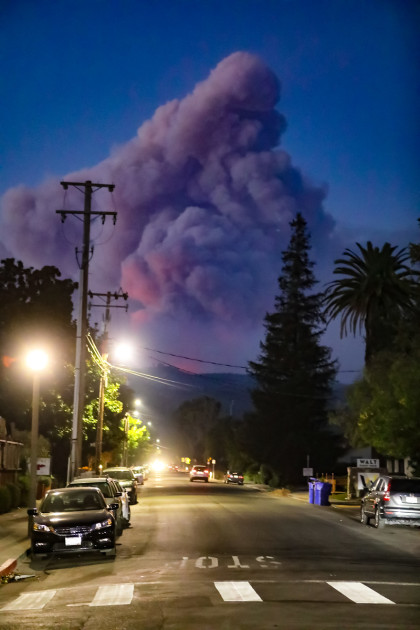As your County Supervisor, I have the privilege and responsibility of working with my colleagues to set the county’s budget for each fiscal year. This year, we held open hearings during the week of June 11. Due to the unprecedented situation we are in as a result of the costs of recovering from the October fires, we elected to utilize funds from our reserves for the first time in recent years. I knew going into the budget discussions that it was going to be difficult to fund essential services while providing funding for our fire recovery and resiliency for the future. But we did it – and still fund critical services for the First District.
A budget is really a reflection of the needs and priorities in our community. As such, recovery from the October Fires and investing in our ability to respond to disasters so we are more effective in the future was tantamount. We are investing in our Fire and Emergency Services, including dedicating additional funding to allow for increased staffing during red flag warning events, as well as $500,000 dedicated to vegetation management. We are also reorganizing our Emergency Management division and adding staff who will focus on community engagement and preparedness, including neighborhood outreach, a community alert and warning program, and vegetation management efforts.
All around the County people are now thinking about preparedness. These fires have activated neighborhoods—I’ve seen it first hand in the Neighborhood Captains group my office is facilitating for fire survivors in my district. I am committed to making sure that we as the County government do our part to support and strengthen preparedness efforts. Currently, these activities are taking place in pockets spread throughout the county, specific neighborhoods, flood zones, or in interest areas. We’d like to move towards creating a collection of materials and resources that is uniform and shared throughout all these groups.
My colleagues and I are dedicated to enacting policies that will enable our County to emerge as a leader in the Emergency Management field in the State of California. We are committed to developing a new first-class alert and warning program that will incorporate redundancy, innovative technology, and real-time situational awareness. With technological advancements in recent years, residents expect prompt, accurate, detailed, and regularly updated information about disasters and threats in their areas. I welcome the opportunity to serve in a leadership role by developing a warning program that more closely matches public expectations for what information the government will provide in times of crisis. We absolutely need to do better, and with this budget, we are making an investment in our capacity.
 Though the October fires were certainly center stage in the budget hearings, there were a number of other vital discussions. One area that I received a lot of constituent feedback on was the proposed cuts to our Behavioral Health division. These cuts were a result of an overestimation of revenues in the department, but could not have come at a worse time. By working together, leadership in the Health Department, the Human Services Department and the Board of Supervisors were able to backfill most of the proposed cuts to program staff and contracts with community based service providers. This means that the vital services to our friends and neighbors who maybe be struggling with behavioral health challenges like post-traumatic stress, depression and addiction are being preserved.
Though the October fires were certainly center stage in the budget hearings, there were a number of other vital discussions. One area that I received a lot of constituent feedback on was the proposed cuts to our Behavioral Health division. These cuts were a result of an overestimation of revenues in the department, but could not have come at a worse time. By working together, leadership in the Health Department, the Human Services Department and the Board of Supervisors were able to backfill most of the proposed cuts to program staff and contracts with community based service providers. This means that the vital services to our friends and neighbors who maybe be struggling with behavioral health challenges like post-traumatic stress, depression and addiction are being preserved.
I know that readers of this publication cannot forget the tragic events this past spring in Sonoma where two different residents in mental health crises did not get timely access to the services they needed. As was well covered in the press at the time, the fact that the county’s Mobile Support Team (MST) did not serve the Sonoma Valley was cause for alarm. The MST is a field based program that is staffed by licensed mental health clinicians, certified substance abuse specialists and others that can provide mental health and substance abuse disorder interventions to individuals experiencing a behavioral health crisis by meeting them where they are at. I have been a consistent advocate for making the MST available outside of the 101 corridor to my constituents, and I am incredibly proud that this year my colleagues and I have finally approved funding to bring the MST to the Sonoma Valley.
Another issue important to Sonoma Valley is funding for Homeless Services. Sonoma Overnight Support operates The Haven located at First Street West. SOS declined to apply for funding for its regular operations at the shelter as they were unable to comply with requirements for funding because of their small size. But they did request funding for the emergency shelter program operated during the wet, cold winter months. We were able to meet its $60,000 request through several funding sources.
We also approved funding for a larger community conversation about homeless services and the best way to provide services and expand the level of services to help those who are homeless move into transitional housing and access education and health services they need integrate back into the community. We will begin that conversation and analysis in the fall.
Thank you to the Sonoma City Council for their continuing support to SOS. Providing homeless services requires a collaboration with the County, City and Community, and I am committed to encouraging that partnership.
Whether you find budgets dull or engrossing, this yearly occurrence is certainly of the utmost importance. It creates a blueprint for how we will serve our community in the year to come. To learn more about the Fiscal Year 18/19 budget, you can read through summary documents at sonomacounty.ca.gov/CAO/Public-Reports/Budget-Reports/ or explore in more depth using the Open Budget tool at budget.sonomacounty.ca.gov.








Susan, Thanks for so much! Along with all that, it’s important to us to keep commercial cannabis out of Bennett Valley. I’m still struggling with my little fire-caused difficulties around my home, which relatively speaking, are almost nothing. I’ve been able to live at home since February, which is a real joy. I’ve been so lucky. Marilee